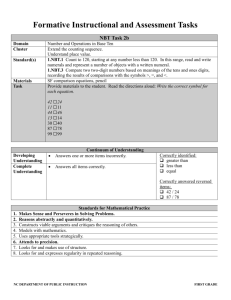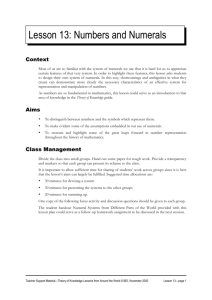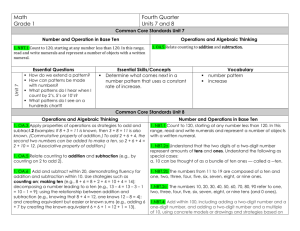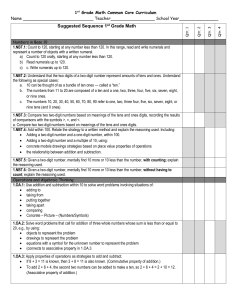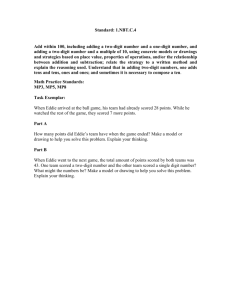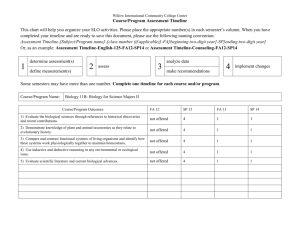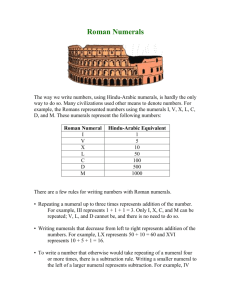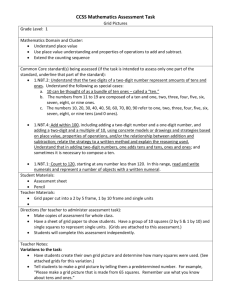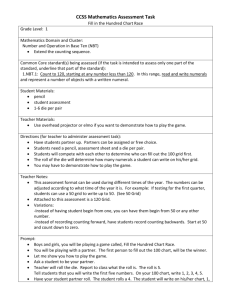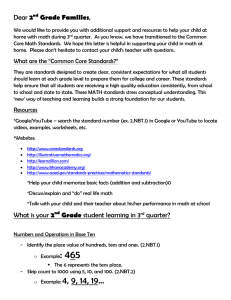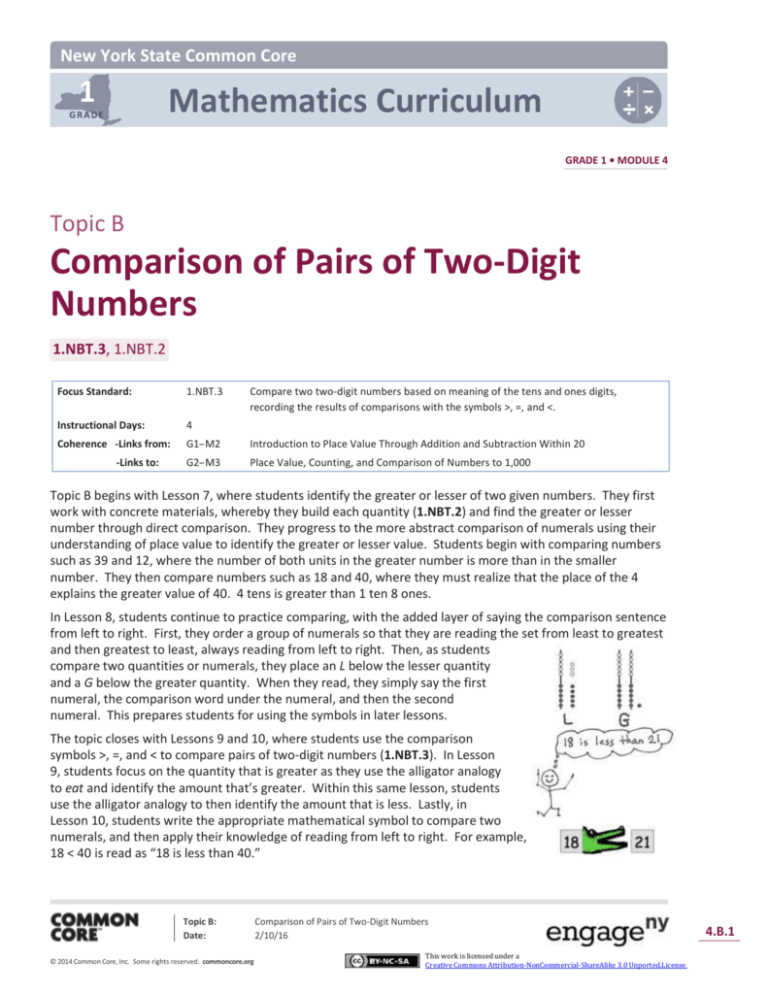
New York State Common Core
1
Mathematics Curriculum
GRADE
GRADE 1 • MODULE 4
Topic B
Comparison of Pairs of Two-Digit
Numbers
1.NBT.3, 1.NBT.2
Focus Standard:
1.NBT.3
Instructional Days:
4
Coherence -Links from:
G1–M2
Introduction to Place Value Through Addition and Subtraction Within 20
G2–M3
Place Value, Counting, and Comparison of Numbers to 1,000
-Links to:
Compare two two-digit numbers based on meaning of the tens and ones digits,
recording the results of comparisons with the symbols >, =, and <.
Topic B begins with Lesson 7, where students identify the greater or lesser of two given numbers. They first
work with concrete materials, whereby they build each quantity (1.NBT.2) and find the greater or lesser
number through direct comparison. They progress to the more abstract comparison of numerals using their
understanding of place value to identify the greater or lesser value. Students begin with comparing numbers
such as 39 and 12, where the number of both units in the greater number is more than in the smaller
number. They then compare numbers such as 18 and 40, where they must realize that the place of the 4
explains the greater value of 40. 4 tens is greater than 1 ten 8 ones.
In Lesson 8, students continue to practice comparing, with the added layer of saying the comparison sentence
from left to right. First, they order a group of numerals so that they are reading the set from least to greatest
and then greatest to least, always reading from left to right. Then, as students
compare two quantities or numerals, they place an L below the lesser quantity
and a G below the greater quantity. When they read, they simply say the first
numeral, the comparison word under the numeral, and then the second
numeral. This prepares students for using the symbols in later lessons.
The topic closes with Lessons 9 and 10, where students use the comparison
symbols >, =, and < to compare pairs of two-digit numbers (1.NBT.3). In Lesson
9, students focus on the quantity that is greater as they use the alligator analogy
to eat and identify the amount that’s greater. Within this same lesson, students
use the alligator analogy to then identify the amount that is less. Lastly, in
Lesson 10, students write the appropriate mathematical symbol to compare two
numerals, and then apply their knowledge of reading from left to right. For example,
18 < 40 is read as “18 is less than 40.”
Topic B:
Date:
© 2014 Common Core, Inc. Some rights reserved. commoncore.org
Comparison of Pairs of Two-Digit Numbers
2/10/16
This work is licensed under a
Creative Commons Attribution-NonCommercial-ShareAlike 3.0 Unported.License.
4.B.1
Topic B
NYS COMMON CORE MATHEMATICS CURRICULUM
1•4
A Teaching Sequence Toward Mastery of Comparison of Pairs of Two-Digit Numbers
Objective 1: Compare two quantities, and identify the greater or lesser of the two given numerals.
(Lesson 7)
Objective 2: Compare quantities and numerals from left to right.
(Lesson 8)
Objective 3: Use the symbols >, =, and < to compare quantities and numerals.
(Lessons 9–10)
Topic B:
Date:
© 2014 Common Core, Inc. Some rights reserved. commoncore.org
Comparison of Pairs of Two-Digit Numbers
2/10/16
This work is licensed under a
Creative Commons Attribution-NonCommercial-ShareAlike 3.0 Unported.License.
4.B.2

